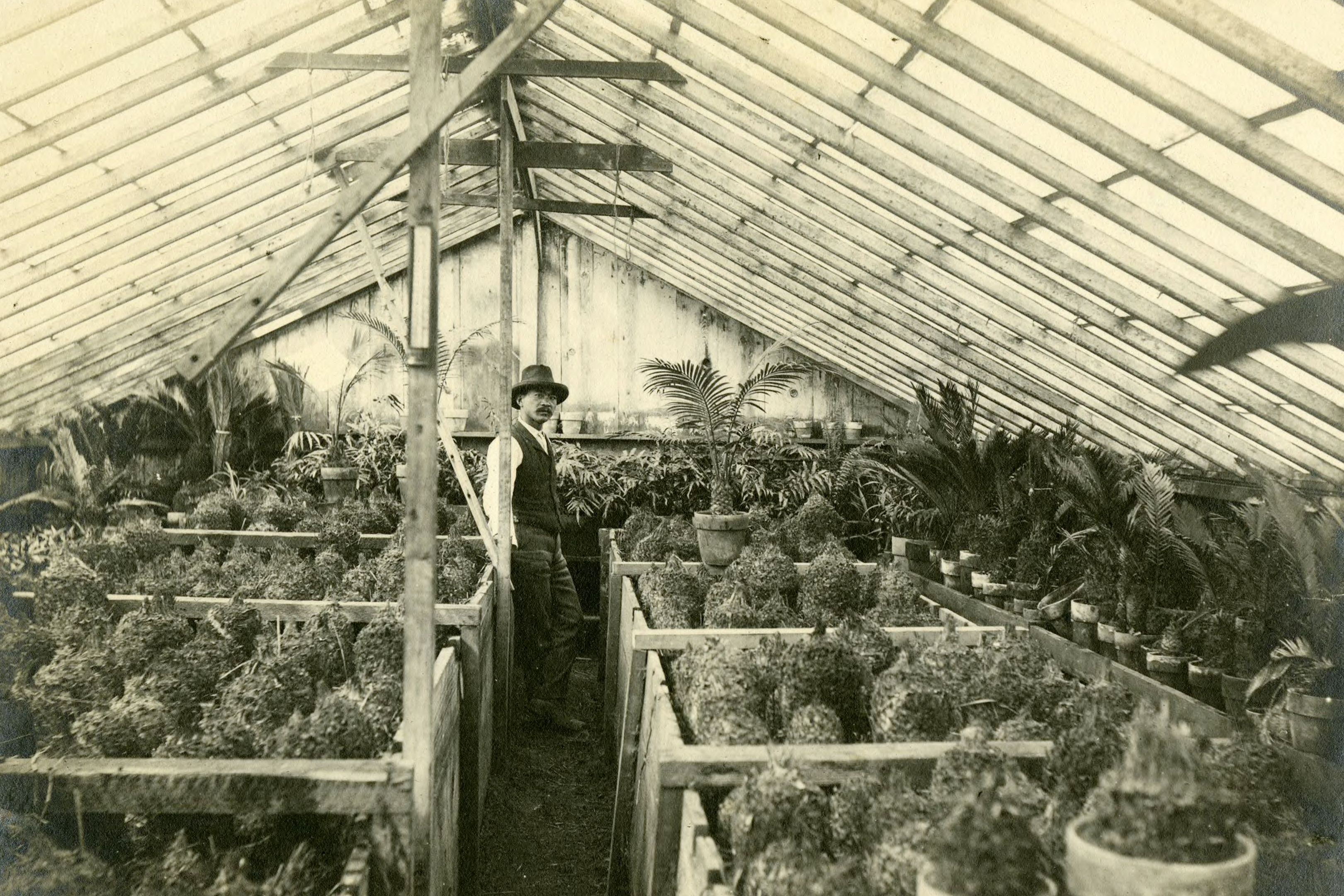Kanetaro Domoto arrived in San Francisco in the 1880s from Wakayama Prefecture in Japan. After taking on different jobs, he and his brothers founded a profitable business of growing flowers in nurseries, which led them to become the first growers in Northern California to commercially produce imported camellias, azaleas, wisterias and lilies.
Using Japanese agricultural techniques and seeds, the Domotos played a key role in founding San Francisco’s downtown wholesale flower market in 1912 and the SoMa market in 1924. Today, a relocated version remains part of the iconic San Francisco Flower Market at Sixth and Brannan streets, one of only five wholesale flower markets in the United States.
In 2019, the records and photographs of the California Flower Market, as it was once known, were donated to the California Historical Society. The records include photographs, books, articles and other ephemera from the late 1800s to 2014, which together tell the history of the market and California’s flower industry. Now, the California Historical Society has put them together in an online exhibition.
On a Friday morning, Alex Shibata was busy greeting customers at his wholesale store in the flower market. The market is open to wholesalers before dawn, and to the general public from 8 a.m. to 1 p.m. four days a week. As a fourth-generation Japanese American taking care of the family business, Shibata said he feels blessed.
“All the businesses you talk to in the Bay Area and Silicon Valley, it’s like, ‘We’re 3 years old or 7 years old,’” Shibata said. “And we’ve been here for like 117 years.”
The flower industry in the Bay Area began during the 1850s Gold Rush when successful prospectors were searching for ways to spend their newfound wealth. Flowers went from being luxury items to expected adornments in venues like restaurants and at events such as weddings.
Like many young industries in the United States in the mid-1800s, the flower industry was run by immigrants. From the beginning, San Francisco’s growers were members of the Chinese American, Italian American and Japanese American communities.
By 1929, Japanese Americans produced 70% of the major greenhouse flowers and chrysanthemums in Northern California, according to an oral history project about Japanese American growers.
Bob Otsuka worked as the general manager of the California Flower Market for more than two decades.
“It reflects and parallels the Japanese American experience in America,” Otsuka said in a recorded interview with staff from the historical society in 2022. In the 1980s, when Otsuka got his first job at the flower market, he commuted from his home in the East Bay to arrive at work at 5 a.m., when the market had already been open for hours.
“They started at 12, 1, 2 a.m.,” he said.
During World War II, when the United States Army ordered the forced removal and incarceration of Japanese Americans living on the West Coast, many Japanese American growers and florists lost their land and businesses. Flower Market, Inc. board president Sam Sakai continued managing his company by mail while he and his family were held in internment camps.
In the 1990s, as Bay Area real estate prices exploded, many Japanese growers sold their nurseries to developers. Second or third generations of Japanese American flower families often decided to pursue other careers.
“All the young kids didn’t want to get their hands dirty,” said Steven Takeuchi, a longtime sales associate at the flower market and fourth-generation Japanese American. “They want a high-tech, easy job.”
Today the market is diverse, with many Latino growers having joined the industry, said Jeanne Boes, the flower market’s current general manager.
More changes are in store for the flower market’s second century of existence. Following a real estate firm’s purchase of the SoMa building it has occupied since the 1950s, next year, the market will move several miles south to Potrero Hill.
But Boes is confident that the spirit of the early flower growers won’t be lost.
“The donation of the historic files and exhibition will preserve the history of Asian American immigrants in building California’s thriving floricultural industry,” she said, “and inspire others to continue in their footsteps.”
San Francisco Flower Mart
📍 640 Brannan St.
🗓️ Open to the public Wednesday-Saturday, 8 a.m.-1 p.m.; closed Sunday-Tuesday
🔗 sanfranciscoflowermart.com
